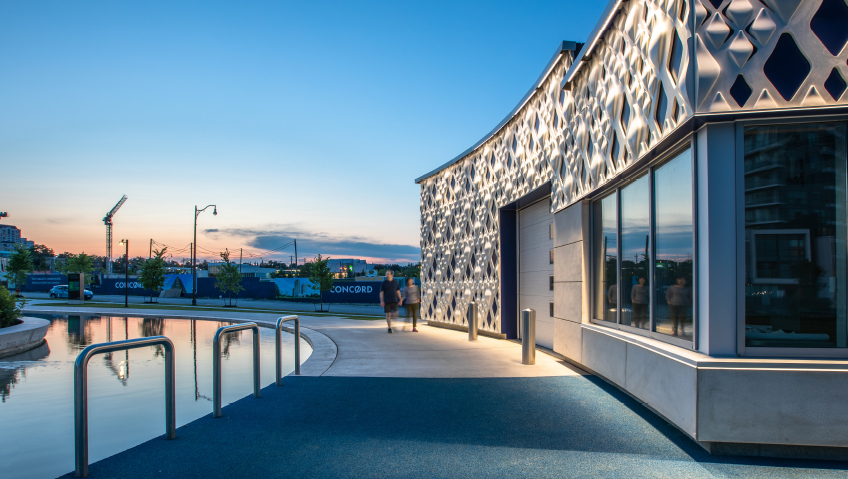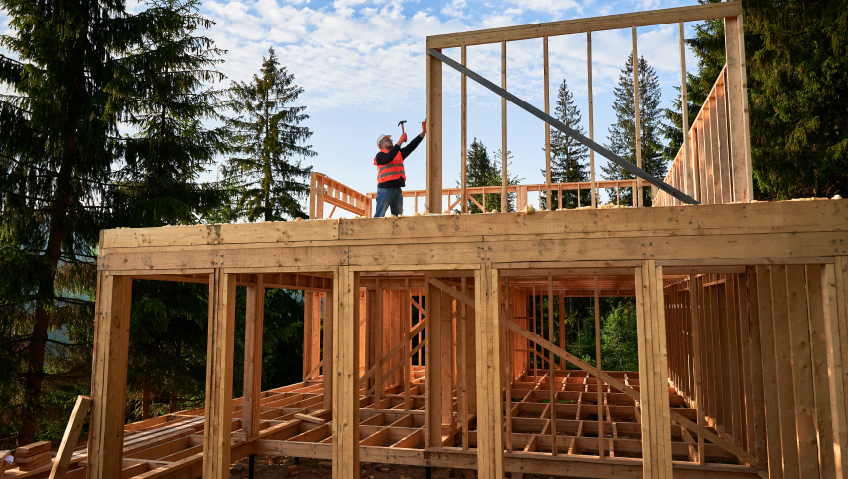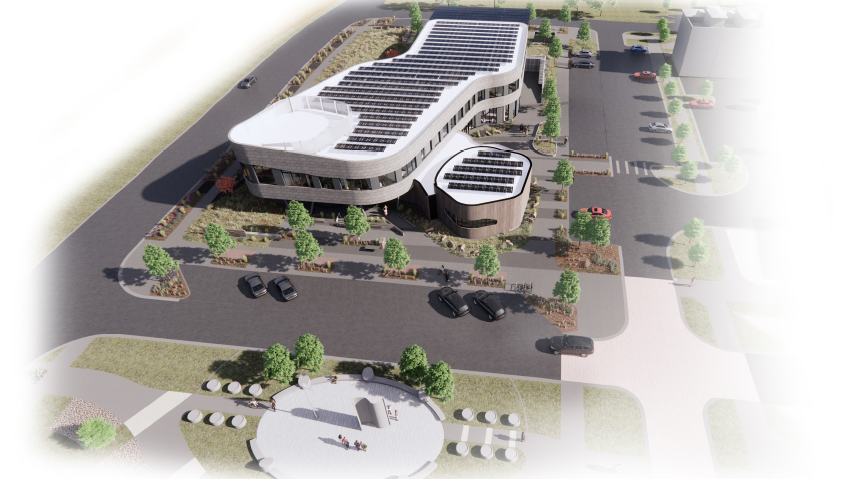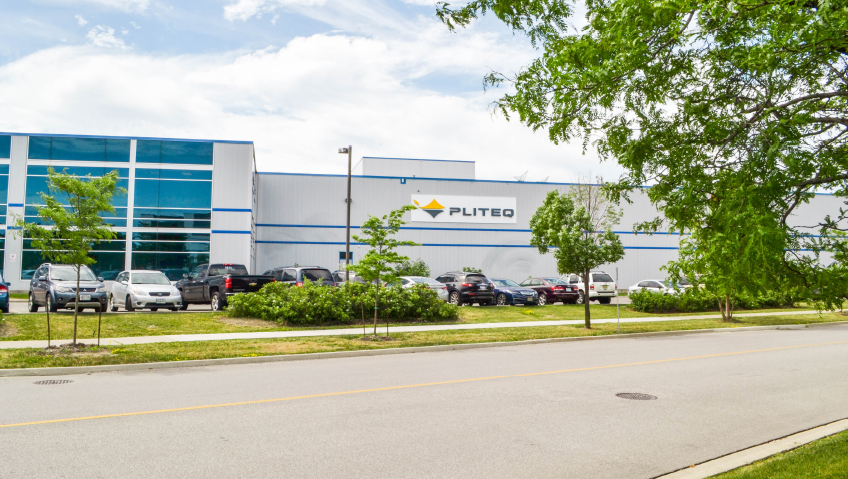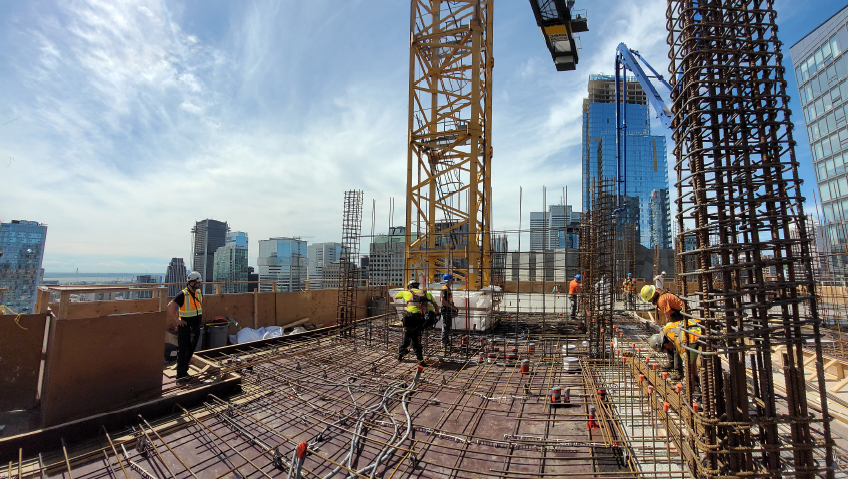Committed to providing high-quality products and creating original solutions for a range of applications and projects, Spring Valley Corp (SVC) boasts more than 36 years of experience. The company offers a wealth of engineering, materials science, and project management expertise to produce design support and construction details to meet an owner, design team, or construction team’s project needs.
A go-to source for rear-ventilated façade systems, SVC provides upscale and environmentally friendly options for building requirements with an RVF system that satisfies all criteria for ecological, sustainable, and ecologically friendly designs thanks to its clever layer structure, which offers a component specifically suited for every exterior wall function.
Continuing the construction legacy of Murray Sommer, Eric Sommer initially started his career in residential home construction, focusing on backyard decks, finished basements, and house framing. With his skills progressing, Eric transitioned to high-end custom home building and later to commercial and industrial projects. His expertise in wood construction led him to work on iconic Canadian structures, including the Art Gallery of Ontario’s Italian Gallery and Lansdowne Stadium in Ottawa.
When the company restructured in 2015, Patricia Overgaard came on board. Together they discovered Ultra-High Performance Concrete and recognized it as a building material with the potential to transform architecture while minimizing environmental impact.
Currently manufacturing a number of products, including Flat UHPC wall panels in sizes 1220mm x 3660mm x 14mm up to 38mm; curved, shaped, and flat architectural concrete building elements as large as 3.6m x 7.5m x 75mm or as required; Dream Wall insulated concrete panels made with 1” of UHPC on the inside as well as the outside that can achieve R-values as high as R100; and iClad thermally broken attachment systems made from galvanized steel or stainless steel, SVCs’ main advantage is the capacity to complete intricate projects that call for a great deal of mold creation and careful engineering to realize the vision of the building designer.
“With the technology that Spring Valley has developed for flat panels, we are able to provide the market with a mass-produced panel with threaded holes in the back of the panel in a 150mm grid to facilitate the panel’s attachment to the building,” says Sommer.
With a focus on full building envelopes, SVC provides a comprehensive array of services and products. Regardless of budgetary constraints or price ranges, the business can collaborate with a client to attain their ideal results.
Producing UHPC is Sommer’s and SVC’s main priority and CAAST (Concrete Art and Applied Science Technology) is its hallmark product. Described as a “unique product,” CAAST concrete is fully engineered, combining particle density theory and chemistry to formulate concrete that can do the required job.
Depending on the project at hand, Spring Valley produces two types of concrete: Ultra-High Performance and High Performance. These types of concrete are primarily distinguished by their overall strength. UHPC is 120 MPA and beyond, while HPC is 90 to 120 MPA. While most projects are best suited for HPC, when a project calls for it, UHPC can be implemented. Concrete selection is influenced by a number of parameters, including water resistance and flexural strength, and for those at SVC, all of these considerations must be taken into account.
Sustainability and environmental concerns also benefit from SVC’s capacity to create thin concrete profiles. Due to the carbon footprint cement production leave behind, as well as related problems with mining and transportation, concrete has a negative reputation, and Sommer suggests one solution is simply using less.
Making investments in concrete innovation and sustainability has been part of SVC’s mission since the company began its journey into UHPC, and innovations have included mold making techniques, mold design, attachment methodology, and mixes with different properties and aggregates to create the appearance that is called for while maintaining the structural objectives.
“We are committed to fulfilling the design visions that architects task us with, which calls for a lot of out-of-the-box thinking,” says Sommer. “Our commitment to innovation reaches beyond architecture to innovative infrastructure applications currently under development.”
One of the company’s initial attractions to UHPC technology was the sustainability of the material. A building clad with UHPC uses less material than standard precast; UHPC panels can be made as thin as ½”. Another important aspect of sustainability is durability, in which case UHPC is an unparalleled material.
“The past 20 years have seen significant advancements in precast concrete technology, with the introduction of UHPC playing a key role in driving innovation and pushing the boundaries of what is possible in precast concrete construction,” says Patti Overgaard, Marketing and Sales. “UHPC’s superior strength, durability, and resistance to corrosion allow for thinner and lighter components, and its refined nature and moldability allow for more aesthetically pleasing and creative architectural projects.”
Additionally, advancements in production methods—such as digital fabrication techniques and automation—have also allowed for more precise and efficient manufacturing of precast concrete elements. “This has increased the quality and consistency of precast concrete products, leading to faster and more cost-effective construction processes,” she adds.
The increased requirements for improved thermal performance of building envelopes require thicker insulation in the wall assembly, and UHPC allows designers to use precast concrete without the need to increase the thickness of the wall.
Some of SVC’s notable projects are notable indeed, including 1 Park Row, a high-rise in Manhattan where UHPC was the chosen material as thin profiles allowed the architect to optimize the space within the residential units. This 23-storey mixed-use building in Lower Manhattan’s Financial District, designed by Fogarty Finger Architects and developed by Circle F Capital, received a $90 million construction loan from Parkview Financial in 2021. The 305-foot-tall structure will yield 103,000 square feet with 58 condominium units in one- to three-bedroom layouts, along with 19,000 square feet of office and retail space on the lower levels.
This reinforced concrete superstructure features wooden formwork aiding in settling the newly poured concrete. Meanwhile, the voids of the window grid are steadily being lined with blue insulation boards in preparation for the installation of the floor-to-ceiling glass envelope and interstitial spandrels, which will be spaced at two-storey intervals.
The LiUNA (Laborers’ International Union of North America) Local 183 Headquarters in Toronto is another highlight. The project features UHPC, chosen due to its aesthetic appeal. “The reduced weight and ability to cast complex forms made it an ideal solution to achieve the architect’s design,” says Overgaard.
Some challenges the company has faced recently include the quality and availability of raw materials, adds Sommer. “Spring Valley’s clients are constantly pushing us to develop solutions and details for their projects as they push the material to new limits,” he says. “The demand for CAAST concrete has grown exponentially, requiring significant investment in people and equipment.”
Despite these challenges, SVC has enjoyed a number of highlights and accomplishments recently, including its current work producing 3D cladding for its first tower in NYC. “We have developed multiple proprietary mix designs as well as a thermally broken substructure system to attach the panels to the building,” says Sommer. “Our iClad system was designed to meet the budget and energy requirements of the building.”
Additionally, Spring Valley’s CAAST UHPC is gaining a foothold in the market and is being specified by architects throughout North America.
Looking ahead, SVC’s planned transition into a purpose-built facility will allow the company to integrate all learning while enhancing efficiency and productivity to meet the growing demand for UHPC products.
When it comes to what sets SVC apart from similar companies, there are a number of factors. “We recently purchased a large-format laser machine just to fulfill the design objectives of one project,” says Overgaard. “We also manufacture our own thermally broken substructure system which allows us to modify and customize it as necessary to accommodate project-specific needs.” SVC has also designed a mold that allows the company to cast anchors in place which results in higher pull-out strengths and less time.
“Our willingness to take on complex projects and 3D geometry is one of our strong points,” says Sommer, adding that other manufacturers focus primarily on standard flat panels as their factories are set up for this type of repeatable production. SVC proudly stands apart, however. “We are happy to create custom colours, molds, and surface finishes for our customers.”

